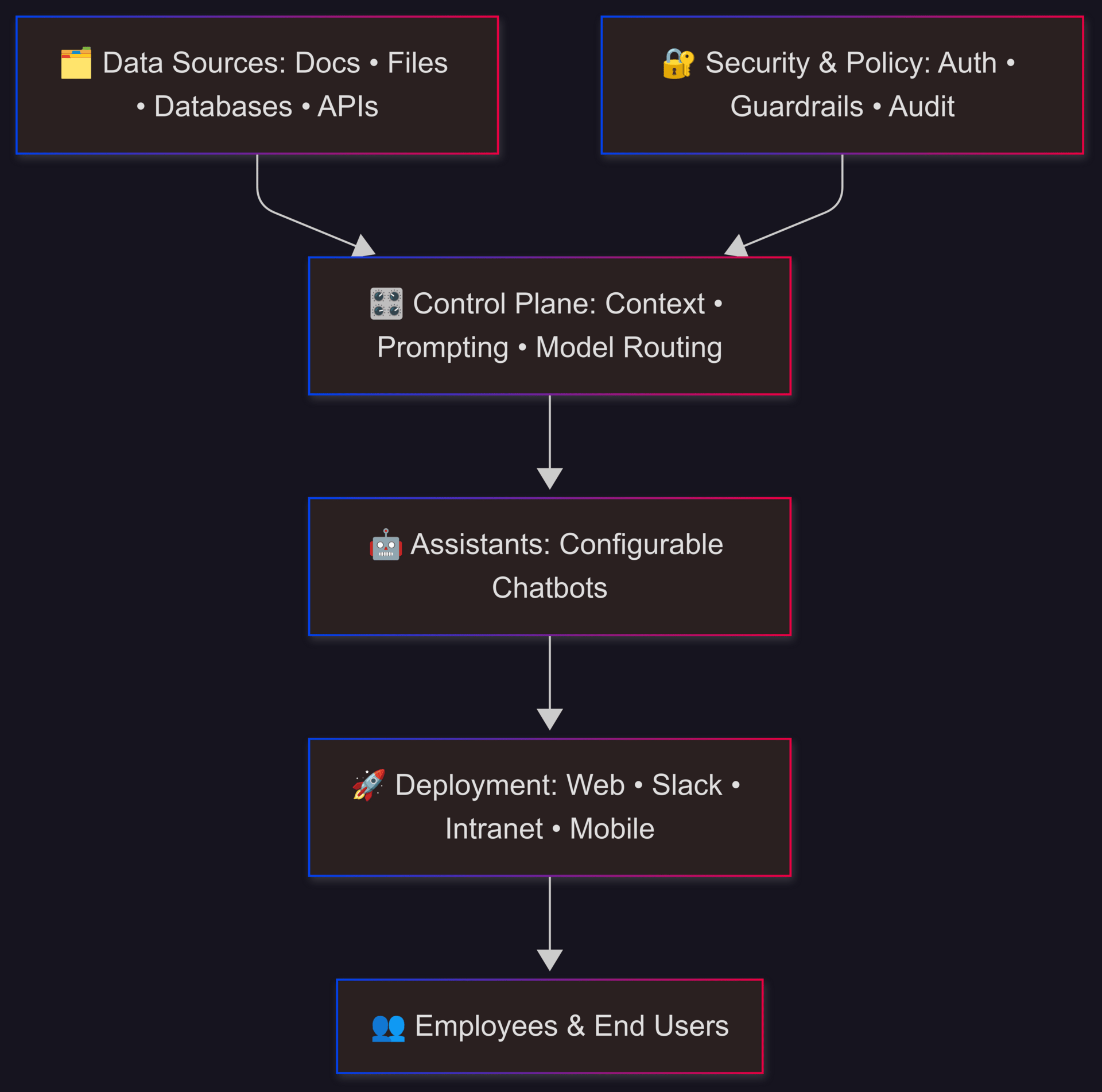Integration Essentials ⤵️
AI powers innovation. Integration unlocks growth.
Control ensures success.
The big wins come from how you connect models to your systems and wrap them with your rules, brand, and experience.
Treat LLMs like engines inside your platform, not destinations.
Enterprises must lead.
Diving Deeper 🤿
Most enterprise value comes from integrations that connect databases, APIs, and workflows to a control plane that enforces your rules.
Route tasks across models such as ChatGPT, Claude, and Gemini based on use case and cost.
Keep prompts, policies, and guardrails inside your stack.
Log, audit, and govern all requests.
This shifts value from a single model to your orchestrated system.

Diagram note:
Inputs from apps and data sources flow into a control plane with three layers: policy engine, model router, and audit.
The control plane returns branded, role-aware results to users.

Core Principles in Practice 💡
Embed Brand and Policy at the Integration Layer
Example: inject tone, terminology, and restricted topics before any model call.Own the User Experience
Example: your web app or chat UI, your SSO, your analytics.Orchestrate Multiple Models
Example: route analytics to a structured model and FAQs to a general model.Mitigate Risk Early
Example: PII scrubbing, role-based access, prompt hardening, and audit logging.
The future is already here, it's just not evenly distributed.
AI Trends & News 📰
🤖 Survey: Multi-AI agent collaboration, architectures, and enterprise patterns. More here → https://dl.acm.org/doi/10.1145/3745238.3745531 |
💨 Agentic enterprise thinking: User-centric orchestration for real business decisions. More here → https://arxiv.org/html/2506.22893v1 |

Legacy Spotlight 🔧
Legacy IT systems, often characterized by rigid architectures and siloed data, present both challenges and opportunities for AI integrations.
By employing adapters and middleware, enterprises can connect these systems to modern LLMs without comprehensive overhauls, ensuring controlled data exchange and adherence to existing security protocols.
This approach not only preserves investments in legacy infrastructure but also amplifies value by enabling precise, context-aware AI applications that respect established guidelines and prevent disruptions from unchecked consumer tools.
There are a variety of powerful, open source tools that can be used to help connect legacy applications to AI systems. We use them all the time.
Closer to Alignment 🤝🏼
Executives can foster alignment around AI integrations by initiating structured change management initiatives, such as cross-functional workshops that involve IT, operations, and leadership teams.
Emphasize phased rollouts to build consensus, starting with pilot integrations that demonstrate tangible benefits like enhanced efficiency or reduced risks.
Encourage open dialogues on guidelines and user experience ownership to align diverse stakeholders, ultimately cultivating an organizational culture that views AI as a controlled enhancer.

Balanced & Insightful ⚖️
Executive Checklist
Inventory data sources, APIs, and workflows.
Define policies: roles, redactions, style, and approvals.
Stand up a control plane: policy engine, router, and audit.
Pilot one high-value use case and iterate.
Three Momentum KPIs
Time to integrate a new data source.
Reduction in manual steps per workflow.
First-contact resolution or cycle-time improvement.

A Note From Jamie
On a daily basis I evaluate and use AI tools for our own work and for clients. The single biggest fulcrum for value is integration. It’s not easy.
There are degrees of integration. Generally, the harder the integration, the more value it creates for the enterprise, and the more complex and nuanced the requirements become, especially around data security and compliance. This is a major area for companies to gain efficiency in existing business processes. Integration.
I hope the insights in this newsletter help you think about how to integrate AI within your enterprise. If you want help, we are putting together a simple offer to help you keep momentum internally without a million dollar program.
Sign up for a three-part engagement: discovery, assessment, and recommendations. The price is $1,500.
The deliverable is a customized roadmap with detailed recommendations based on your current IT infrastructure, focused on a near-term win. The idea is to build trust inside your organization, show ROI quickly, and build on that momentum.
If you’re interested, see the section below.
- Jamie Thompson
Keep the Momentum: Executive AI Integration Assessment
A fast, low-risk way to move from idea to plan.
What you get
Intake: structured interview and questionnaire to map systems, risks, and goals.
Assessment: findings across people, process, and technology.
Working session: review, decisions, and a 90-day roadmap.
Deliverables
A customized integration roadmap with near-term wins.
A prioritized 90-day plan and ownership map.
A concise risk, security, and compliance checklist.
Timeline and price
Delivery within 10 business days.
Price: 1,500 USD.
Pay at booking. Limited capacity each week.
September. Wow.
Well, and just like that, summer is over. It's September.
Let's focus and use the remaining months of 2025 to accomplish something big together.
Here are some beats I'm jamming to today while I work.
🎺🎧 Note: Web edition only.




